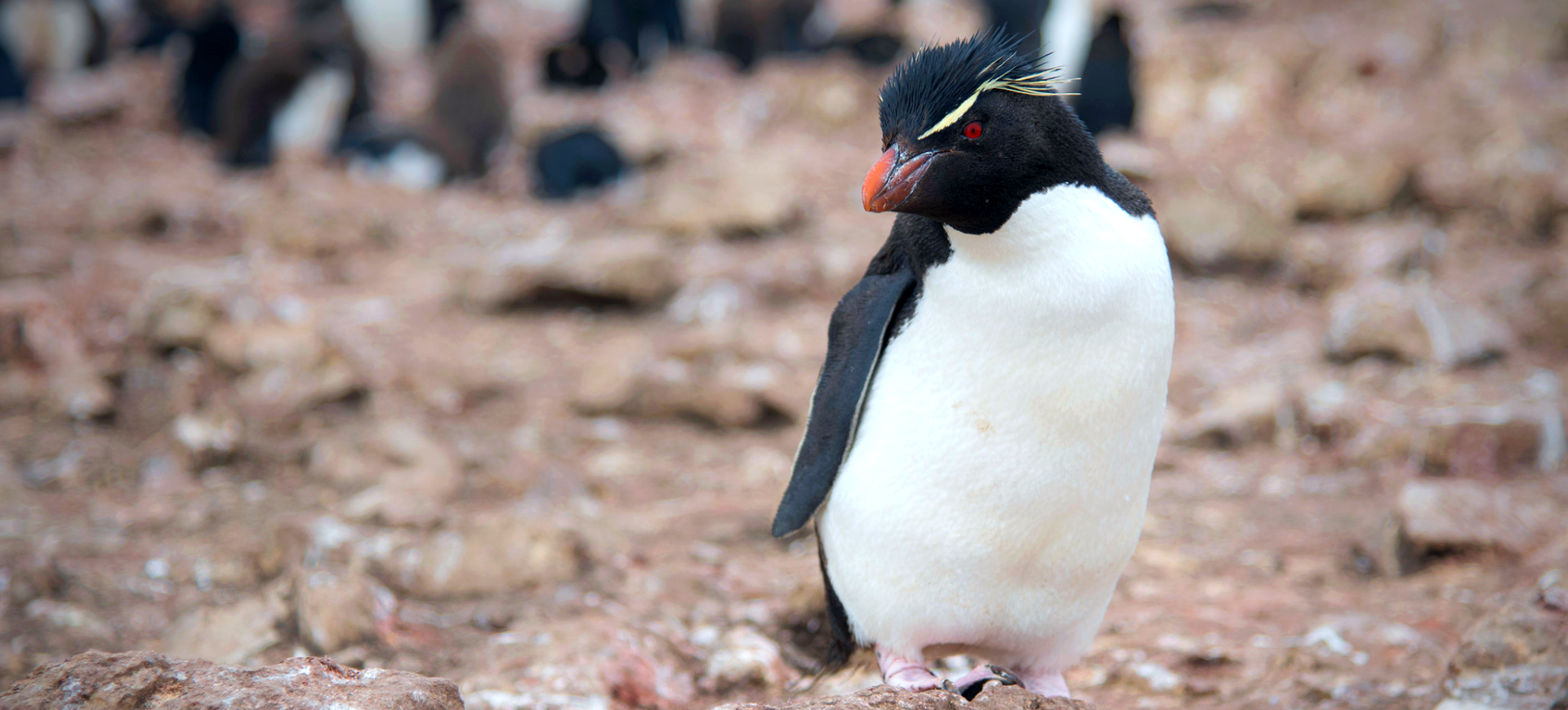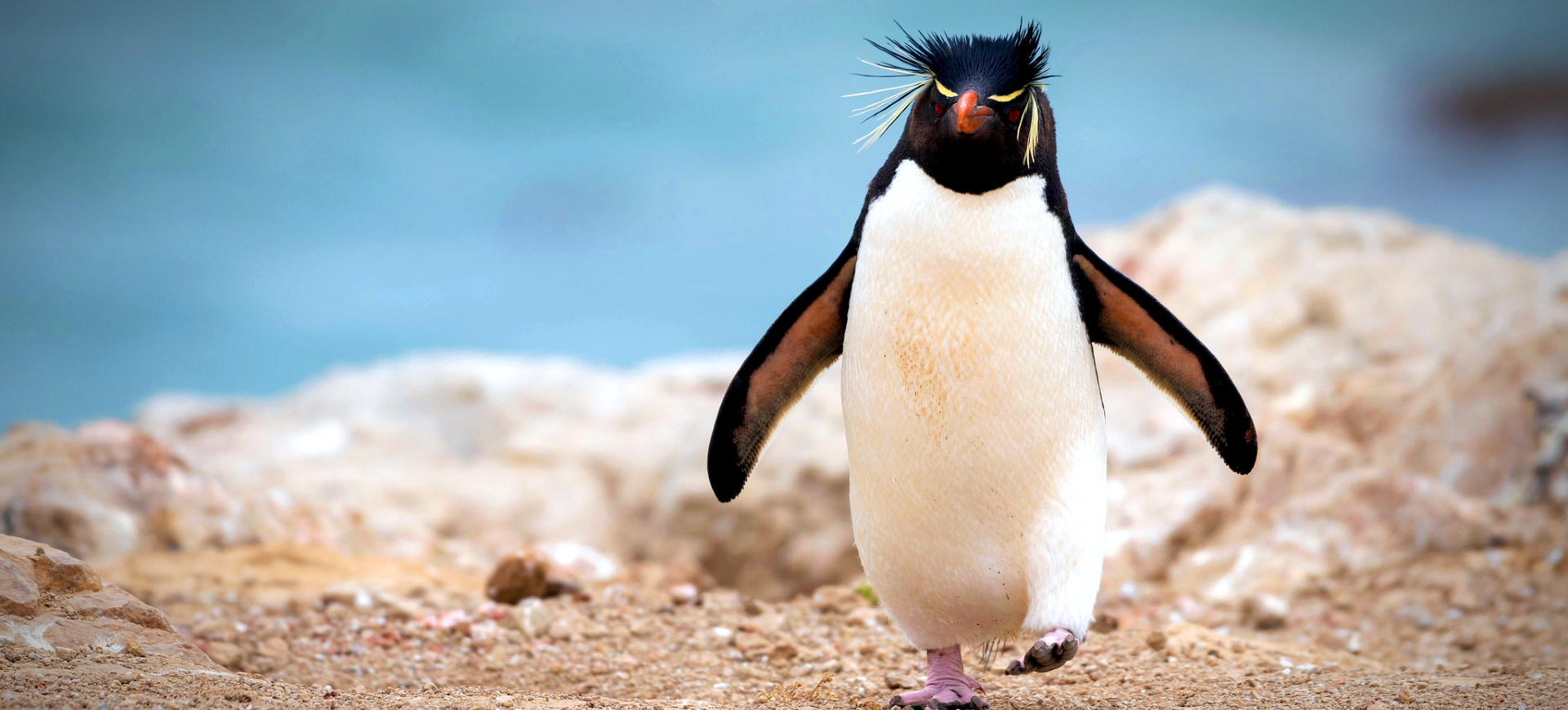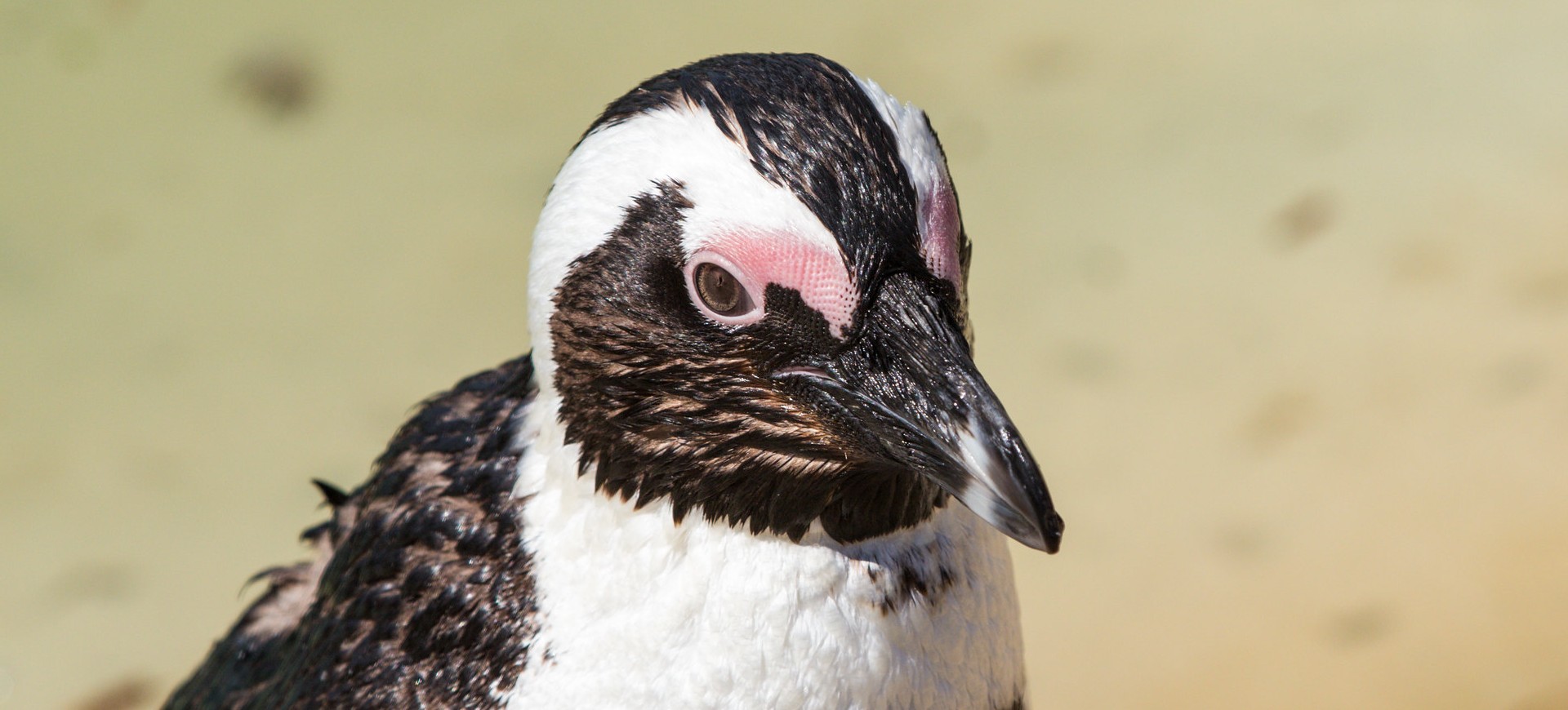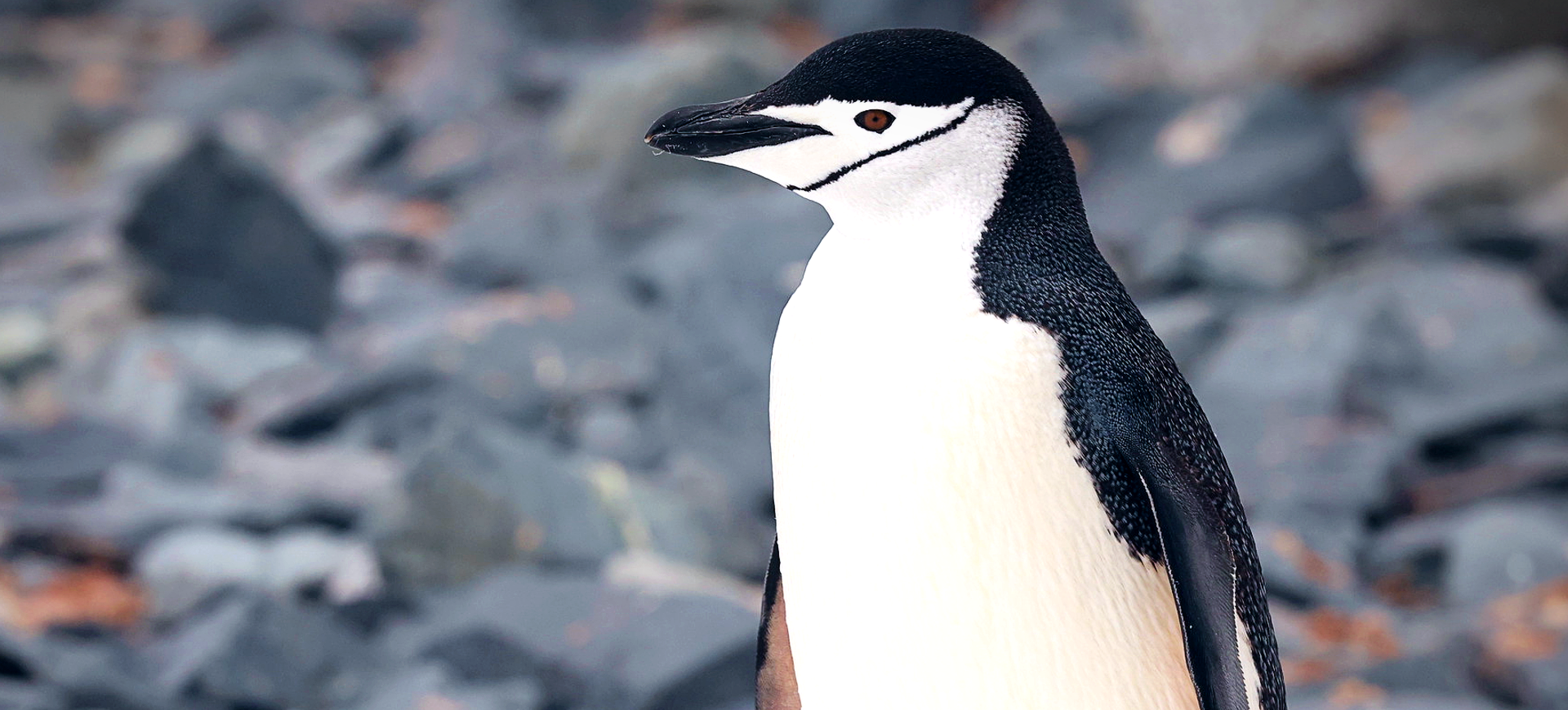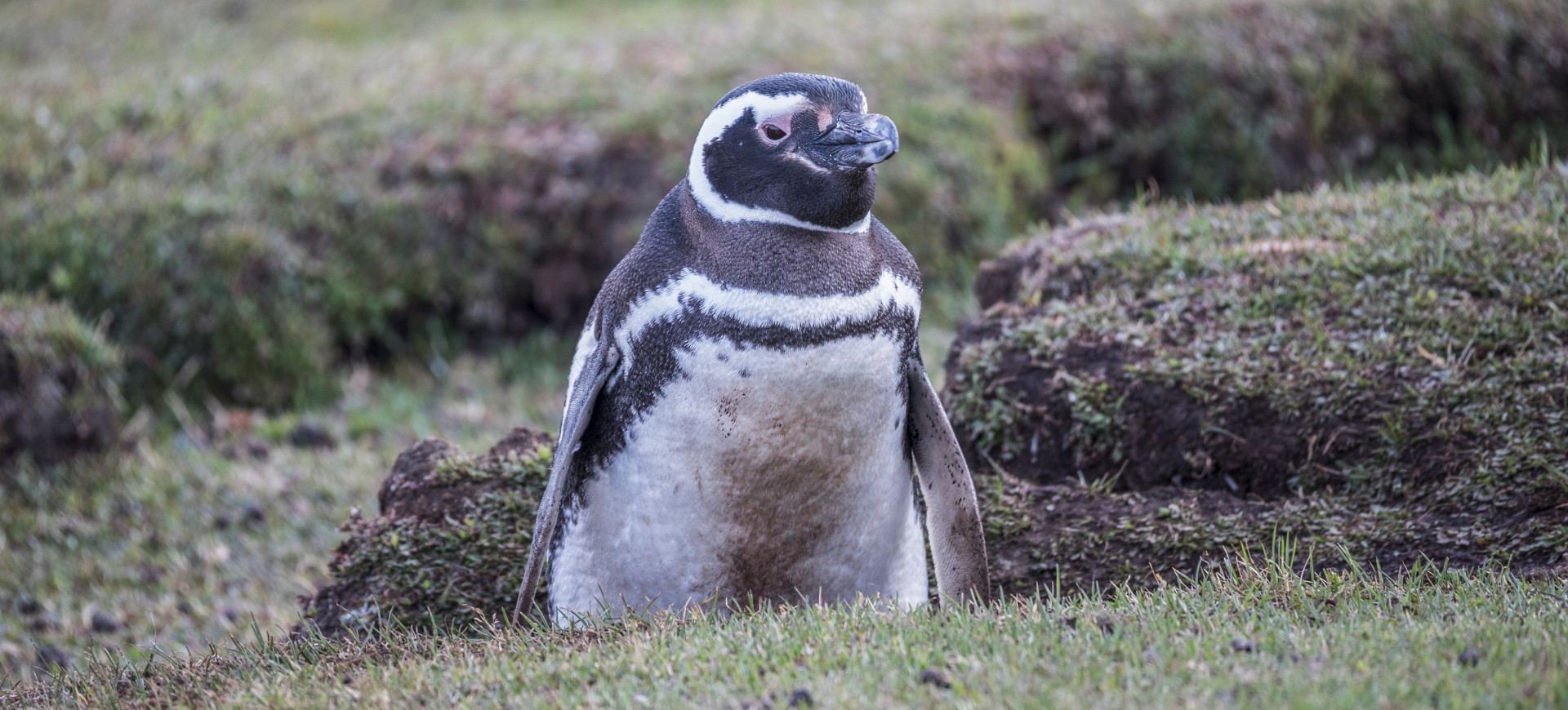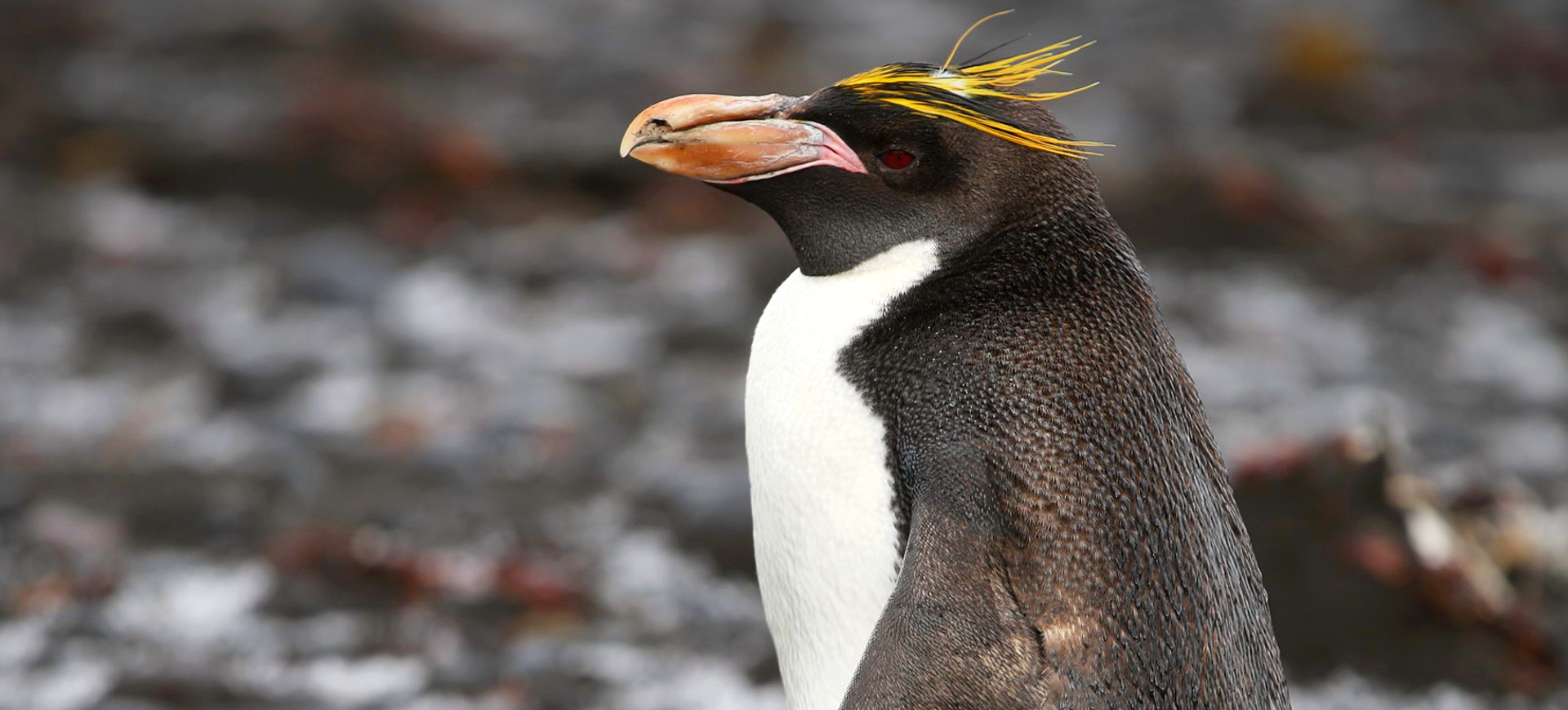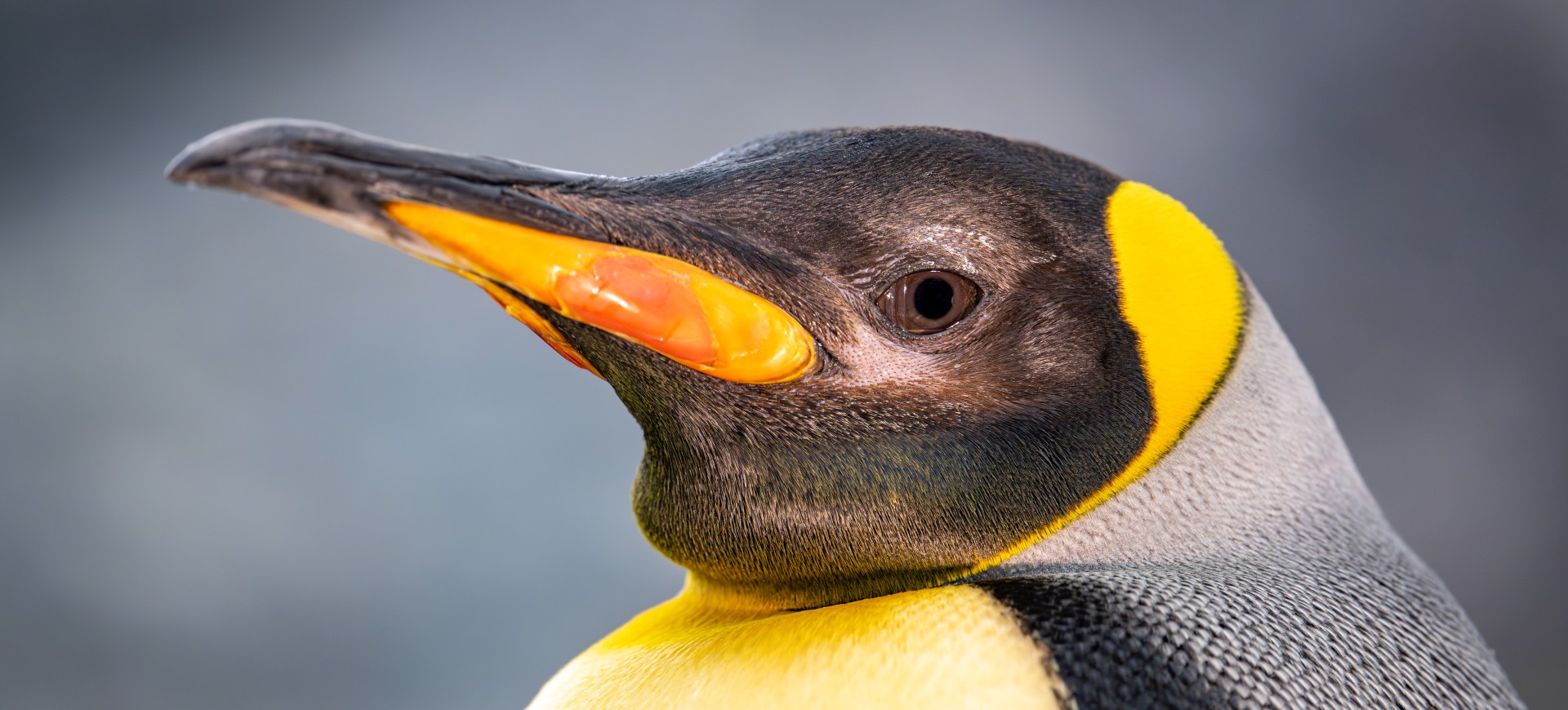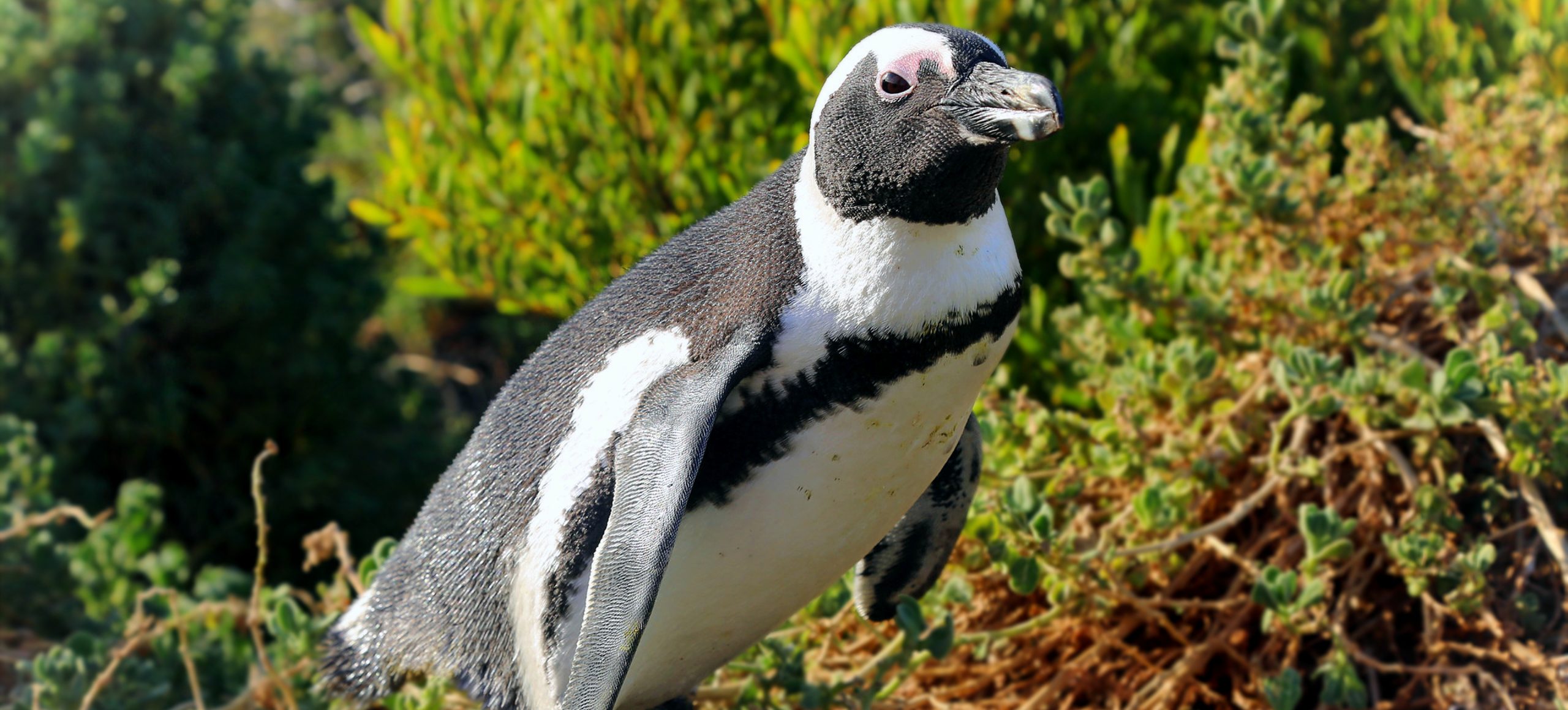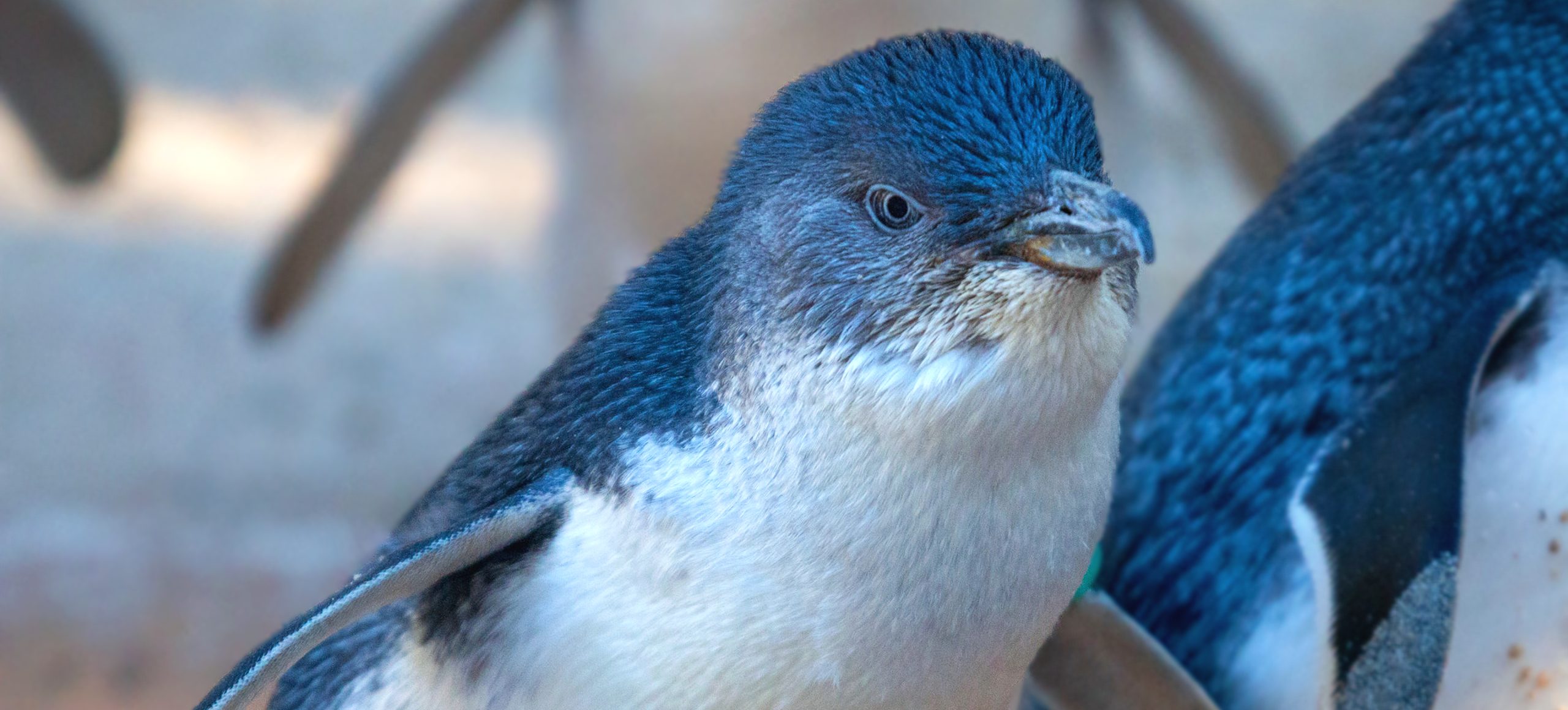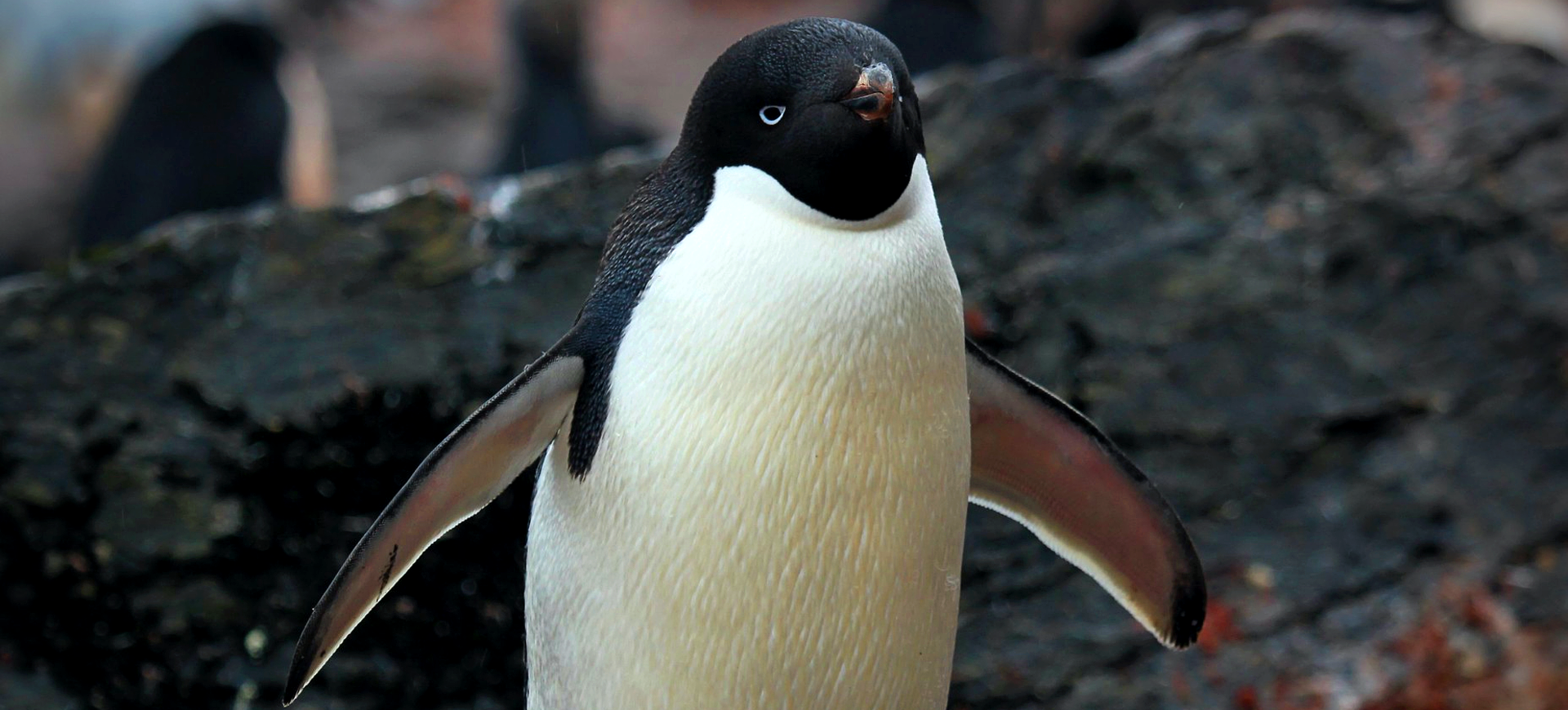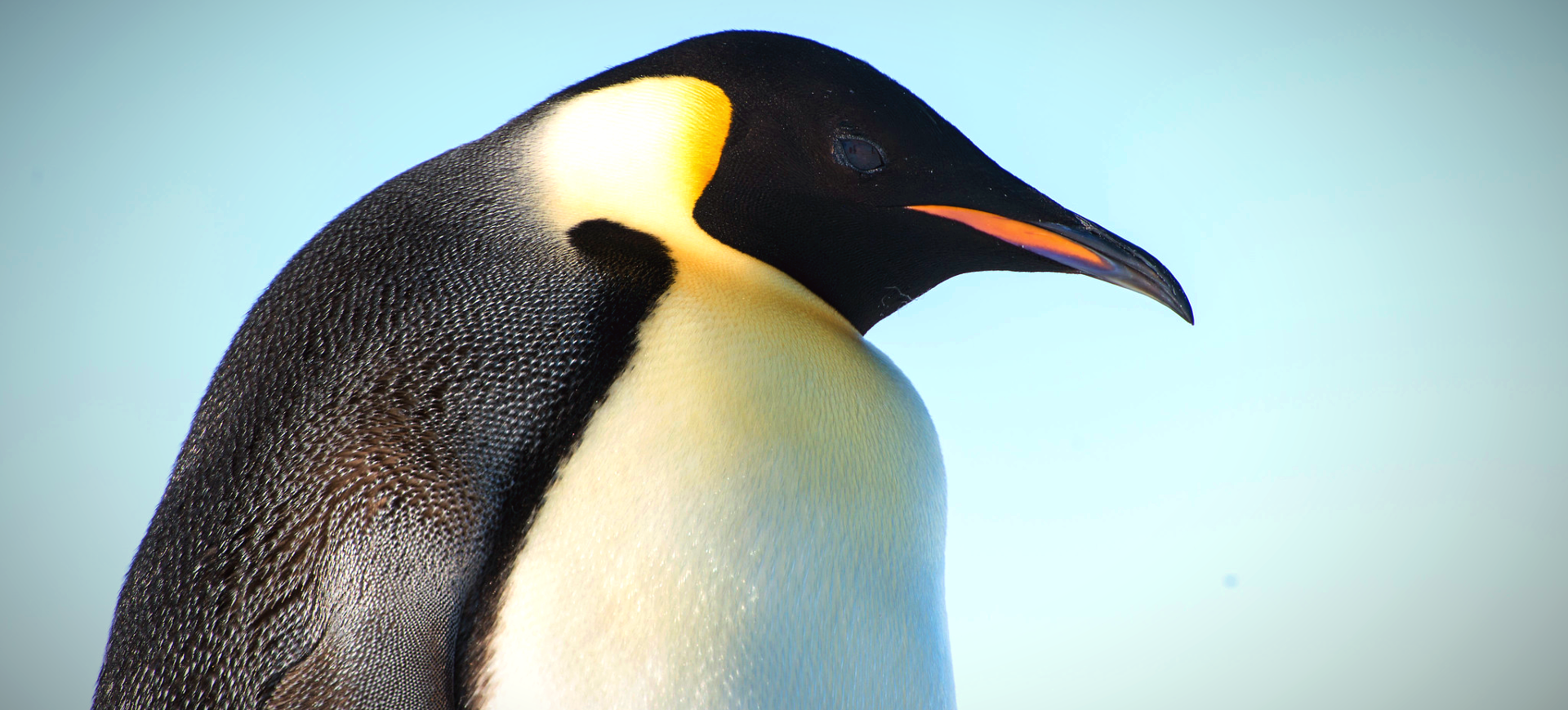Overview
Gentoo Penguins are a unique and easily recognizable species of penguin, known for their distinctive white stripe extending like a bonnet across the top of their heads. They are the third-largest penguin species, following the Emperor and King Penguins. These birds are known for their playful behavior and are often seen as ‘porpoising,’ a form of swimming in which they leap out of the water. They inhabit the Antarctic Peninsula and numerous surrounding islands, thriving in a harsh and icy environment.
Adapted to cold climates, Gentoo Penguins have dense, waterproof feathers and a layer of fat to keep them warm. Their flippers are strong and perfectly shaped for efficient swimming, but on land, they walk upright with a characteristic waddle. Their diet consists of crustaceans, fish, and squid, which they skillfully catch in the water. Their bright orange-red bill and conspicuous white eye patches make them one of the most easily identified penguin species.
During the breeding season, Gentoo Penguins are highly social and form large, noisy colonies. They are known for their elaborate courtship rituals, which include mutual preening and vocalizations. The nesting sites are usually on rocky, ice-free surfaces, where they build nests from stones. These penguins demonstrate strong pair bonds and parental behaviors, taking turns incubating eggs and feeding their young.
Taxonomy
Kingdom
Phylum
Class
Order
Family
Genus
Species
Sub Species
Type
Physical Description:
Gentoo Penguins are noted for their bright orange-red bill and the distinctive white patch extending from eye to eye over the top of their head. They have a black head, chin, and throat, with a white belly and a broad white band across the top of the head. Adult Gentoos stand about 76 to 81 cm tall and are characterized by their long, stiff tails, which trail behind them as they walk. Their plumage is dense, waterproof, and provides excellent insulation against the cold.
In terms of size, male Gentoo Penguins are slightly larger than females. The average weight for males ranges from 12 to 19 lbs (5.5 to 8.5 kg), and for females, it is about 11 to 17 lbs (5 to 7.7 kg). They have strong, webbed feet that are pale pink or orange in color, aiding in swimming and walking on slippery surfaces. The sleek, streamlined body of the Gentoo Penguin is perfectly adapted for life in the water, where they spend a significant amount of their time.

Lifespan: Wild: ~15 Years || Captivity: ~20 Years

Weight: Male: 12-19 lbs (5.5-8.5 kg) || Female: 11-17 lbs (5-7.7 kg)

Length: Male: 30-32 inches (76-81 cm) || Female: 28-30 inches (71-76 cm)

Height: Male: 30-32 inches (76-81 cm) || Female: 28-30 inches (71-76 cm)

Top Speed: 22 mph (36 km/h)
Characteristic:
Native Habitat:
Gentoo Penguins inhabit the Antarctic Peninsula’s cold, icy waters, rocky shores, and several sub-Antarctic islands. Their habitat includes beaches, coastal plains, and clifftops, often with sparse or no vegetation. These areas are chosen for their proximity to the ocean, providing easy access for foraging. Their colonies are located on flat or gently sloping surfaces, usually free from snow and ice, which are ideal for nesting.
In addition to their Antarctic range, Gentoo Penguins are found on the Falkland Islands, South Georgia, the South Sandwich Islands, and other sub-Antarctic islands. They prefer habitats that offer some protection from wind and predators, often nesting under tussock grass or other available cover. Their ability to adapt to various coastal environments has allowed them to thrive in some of the most challenging conditions on Earth.
Biomes:
WWF Biomes:
Biogeographical Realms:
Continents:
Countries:
Diet:
Diet & Feeding Habits:
Gentoo Penguins primarily feed on marine organisms, including fish, krill, and squid. Their diet varies depending on their location and the availability of food sources. They are skilled hunters and can dive to depths of over 200 meters, though most foraging occurs at shallower depths. Gentoos can stay underwater for up to seven minutes during a dive, but most dives last only about a minute.
Feeding trips can last several hours, and they may travel up to 15-20 miles from their colony in search of food. Gentoos feed close to the shore during the breeding season to stay near their nests. Their strong flippers make them agile swimmers, capable of quick maneuvers in the water. This agility is crucial for catching fast-moving prey and evading predators.
Mating Behavior:
Mating Description:
Gentoo Penguins are monogamous, often forming long-term pair bonds. Their breeding season starts in October or November, depending on the location. Courtship behaviors include vocal calls and displays, such as head and flipper waving. Nest building is a significant part of their courtship ritual, with pairs collecting stones and pebbles to construct their nests.
Females typically lay two eggs, and both parents share the incubation duties, which lasts about 35 days. Once the chicks hatch, parents take turns feeding and protecting them. The chicks join crèches, or groups of young penguins, for warmth and protection while both parents forage. Fledging occurs about 8 to 10 weeks after hatching, and the young penguins then head to the sea to begin their independent lives.
Reproduction Season:
Birth Type:
Pregnancy Duration:
Female Name:
Male Name:
Baby Name:
Social Structure Description:
Gentoo Penguins are highly social birds, especially during the breeding season when they form large colonies. These colonies are noisy and active, with constant communication among individuals. Social interactions, such as mutual preening and vocalizations, are crucial in pair bonding and maintaining social cohesion. Their social behavior is essential for survival in the challenging Antarctic environment.
Outside of the breeding season, Gentoo Penguins continue to exhibit social behaviors. They often forage in groups, which may increase their efficiency in finding food and provide protection from predators. Understanding their social structure is key to understanding their overall behavior and ecology in the wild.
Groups:
Conservation Status:
Population Trend:
The global population of Gentoo Penguins is relatively stable, with over 600,000 breeding pairs. However, this stability varies by location, with some colonies experiencing growth while others face declines. The largest populations are found in the Falkland Islands and South Georgia. Environmental changes, particularly climate-related, significantly threaten their habitat and food supply.
These penguins have shown a remarkable ability to adapt to changing conditions, which has helped maintain their population numbers. Continued monitoring is crucial to assess the long-term impacts of environmental changes. Protecting their habitat and ensuring sustainable fishing practices are key to conserving Gentoo Penguin populations.
Population Threats:
The primary threats to Gentoo Penguins include climate change, which affects their habitat and food sources. Changing sea temperatures and ice conditions impact the availability of krill and fish, their main food items. Overfishing is another concern, as it reduces their food supply. Pollution, especially from oil spills, poses a significant risk to their colonies.
Human disturbance can also impact Gentoo Penguins, particularly in areas with increased tourism and research activities. Disturbance can lead to habitat degradation and can disrupt breeding and foraging behaviors. The presence of invasive species on some islands threatens their habitat and food sources.
Conservation Efforts:
Conservation efforts for Gentoo Penguins focus on habitat protection and sustainable management of the Southern Ocean. The Antarctic Treaty and the Agreement on the Conservation of Albatrosses and Petrels (ACAP) provide frameworks for their conservation. These international agreements regulate human activities, fishing, and tourism in the Antarctic region to minimize the impact on wildlife.
Research and monitoring programs are crucial to understanding the impacts of environmental changes on Gentoo Penguins. Studies on their population dynamics, breeding success, and foraging behaviors inform conservation strategies. Efforts to address climate change globally are also vital for the long-term conservation of their habitat and food sources.
Additional Resources:
Fun Facts
- Gentoo Penguins are the fastest underwater swimming penguins, reaching speeds of 22 mph.
- They have the longest tail of all penguin species.
- Gentoo Penguins can lay two eggs per breeding season, which is unusual among penguins.
- Their nests are often built with an impressive collection of stones, which can sometimes lead to ‘stone theft’ between nests.
- Gentoos have a varied vocal repertoire and are quite vocal compared to other penguin species.
- They are among the few penguin species that can walk backward.
- Gentoo chicks are born with a soft, grey down feather coat, which they molt for adult plumage.
- These penguins are known for their curiosity and often approach human visitors.
- The name “Gentoo” is thought to have originated from an Anglo-Indian term, although its exact origin is unclear.
- Gentoo Penguins are excellent divers, capable of diving over 200 meters deep.








